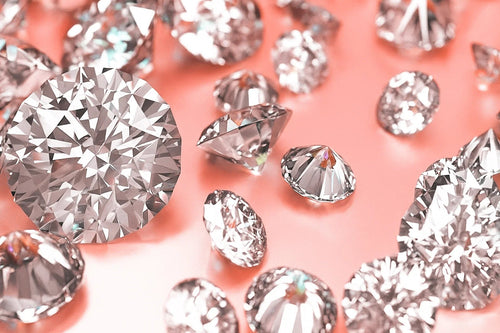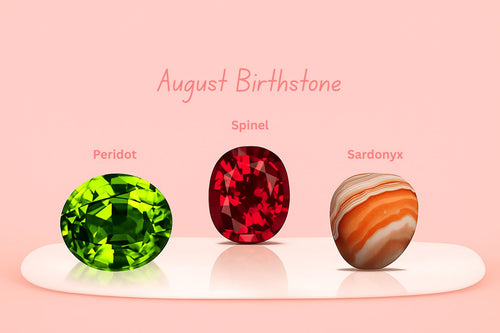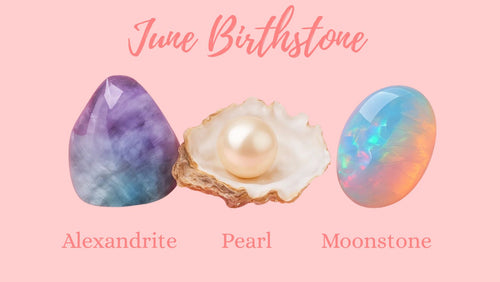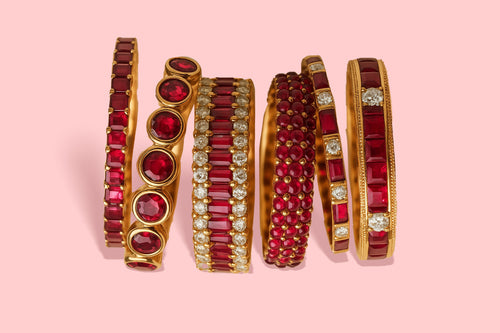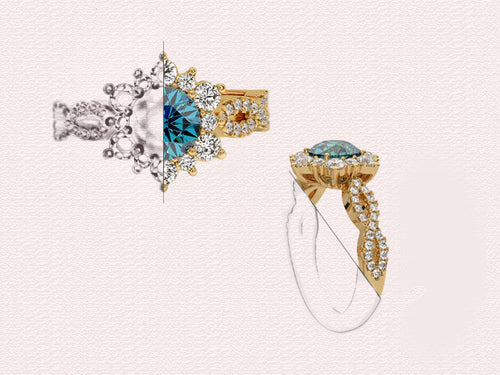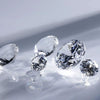Finding the right engagement ring is a special moment in your love story. At Avideri, we know how meaningful this step is. That’s why we’ve created this helpful Engagement Ring Guide to walk you through everything you need to know about engagement rings from styles and settings to choosing the right diamond. Whether you're preparing to propose or shopping together, this guide will help you feel confident in your choice.
1. Understanding Engagement Ring Styles
Solitaire Ring
A solitaire engagement ring features a single center diamond without any side stones or added details. Its strength lies in its simplicity, focusing entirely on the beauty and brilliance of one stone. This style is perfect for those who prefer a clean, elegant, and timeless look. It suits almost any personality and works beautifully with all diamond shapes and sizes.
Halo Ring
Halo rings highlight the center diamond by surrounding it with a circle of smaller diamonds. This setting gives the illusion of a larger center stone and adds extra brilliance. It’s a popular choice for those who want more shine without increasing the main diamond’s size. Halo styles often look luxurious and can enhance both round and fancy shaped center stones.
Three Stone Ring
Three stone engagement rings feature a main diamond flanked by two smaller stones on each side. The design represents a couple’s journey past, present, and future making it deeply meaningful. Each stone can be the same or different shape, and the side stones often add both beauty and symbolism. This style is perfect for romantic buyers who want something personal and unique.
Vintage Ring
Vintage engagement rings are inspired by older eras and often feature intricate designs like filigree, milgrain edges, or engraved patterns. These rings carry a sense of romance and elegance from the past. Popular vintage eras include Victorian, Edwardian, and Art Deco. Ideal for someone who loves antique touches and timeless beauty, vintage rings stand out for their detail and charm.
Side Stone Ring
Side stone rings include small diamonds or gemstones set along the band next to the center stone. These extra stones boost the ring’s brilliance and provide a continuous sparkle from all angles. They can be paired with various center stone shapes and settings. Side stone rings are perfect for those who want added shine without overpowering the main diamond.
Antique Ring
Antique rings are genuine old pieces, usually over 50 years old, with handcrafted details and vintage charm. Each ring carries history, often passed down through generations. They may include rare diamond cuts or unique settings not found in modern designs. Antique rings are perfect for those who value history, uniqueness, and craftsmanship in their engagement jewelry.
2. Choosing the Right Diamond Shape
Choosing the right diamond shape is one of the most important steps when picking an engagement ring. The shape changes how the ring looks on the hand and how the diamond catches the light. Every shape has a different look, so it’s important to choose one that fits your partner’s style and personality. Our Engagement Ring Guide helps you explore each shape so you can make the best choice with confidence.
Round diamonds are the most popular. They reflect the most light and have a clean, balanced shape. Oval diamonds feel soft and graceful. Their longer shape makes fingers appear slimmer and adds a bit of length to the hand. Princess cut diamonds are square or slightly rectangular, with a sharp and modern design. They stand out while still feeling balanced and well-shaped.
Emerald cut diamonds are long and flat on top, with straight lines and wide steps. This shape is more about a clear, smooth appearance than shine. Pear shaped diamonds have one rounded side and one pointed end. They feel romantic, different, and eye catching. Marquise and heart shapes are less common and great for someone who likes bold, one of a kind details.
The right diamond shape should feel personal. Think about how it will look on your partner’s hand and what kind of design matches their daily style. That’s what makes the choice meaningful.

3. The Importance of Diamond Quality (The 4Cs)
When choosing a diamond, it’s important to understand the 4Cs cut, color, clarity, and carat weight. These four things decide how the diamond looks and how much it costs.
Cut is how well the diamond has been shaped and polished. A well-cut diamond reflects more light and looks brighter. Even if a diamond is big, it won’t shine if the cut is poor.
Color shows how white or yellow a diamond is. Diamonds with less color are more valuable. Most people prefer near-colorless stones because they look clean and bright.
Clarity is about tiny marks inside or on the diamond. These marks are natural and happen when the diamond forms. Fewer marks mean better clarity. Most diamonds have some small spots that can’t be seen without a microscope.
Carat is the weight of the diamond. Bigger diamonds have a higher carat weight, but size isn’t the only thing that matters. A smaller diamond with a great cut can look better than a larger one with poor quality.
At Avideri, we help you understand each of these so you can pick a diamond that fits your style and budget. Knowing the 4Cs helps you make a smart choice.

4. Metal Choices for Engagement Rings
5. Ring Settings and What They Mean
A ring setting is the way the center stone is held in place. It also affects how the ring looks and feels. At Avideri, we offer many setting styles, so you can find the one that fits your partner’s style and daily life.
Prong settings use small metal claws to hold the diamond. This setting allows more light to enter the stone, which makes it shine more. It’s simple and works well with many shapes.
Bezel settings have a metal rim that surrounds the diamond. This setting keeps the stone very secure and protects it from damage. It’s great for people who use their hands often.
Pavé settings have small diamonds set into the band. These add extra shine and make the ring look more detailed. The small stones are close together, giving the band a smooth surface.
Cathedral settings lift the center stone above the band using metal arches. This setting gives the ring height and draws more attention to the main diamond.
Each setting offers a different look and level of protection. Think about your partner’s daily routine and style when choosing a setting. The right setting keeps the diamond safe and adds to the beauty of the ring.

6. Select a Center Stone
Choosing the center stone is one of the most important steps in creating your engagement ring. It’s the part that stands out the most and catches the eye. Our Engagement Ring Guide walks you through choosing between diamonds or gemstones, and also between natural or lab created options. Each choice brings its own look, features, and meaning, helping you design a ring that feels just right.
Diamond or Gemstone
Diamonds are the most common choice for engagement rings. They are known for their strength and bright shine. A diamond is hard enough to be worn every day without worry. Many people pick diamonds because they’ve been used for rings for a long time and they go well with any style or metal.
Gemstones such as sapphires, rubies, and emeralds offer color and personality. Some couples choose gemstones because of their meaning, color, or uniqueness. Sapphires come in many colors, not just blue. Rubies stand for love, and emeralds bring a deep green tone. Gemstones can make the ring look different and special while still lasting for years with the right care.
Natural, Lab, or Moissanite
Natural stones are made deep inside the earth over millions of years. Each one is one of a kind with its own marks and patterns. People often pick natural stones because they like the idea of something formed by nature. However, natural diamonds and gems are usually more costly.
Lab created stones are made by people using special machines that copy how stones form in nature. They look just like natural ones and are just as strong and beautiful. Lab grown diamonds and gemstones usually cost less, letting you buy a larger or better-quality stone for the same budget. Many people also like them because they have fewer sourcing concerns.
Moissanite is a gemstone that looks like a diamond but is made in labs. It’s not a diamond, but it shines brightly and is very hard. Moissanite is a great choice if you want a stone that looks similar to a diamond but is more affordable. It gives off strong rainbow-like flashes and can be found in many sizes and shapes.
7. Finding the Right Ring Size
Getting the right ring size is important for comfort and wearability. If you’re planning a surprise proposal, finding your partner’s ring size can be tricky but not impossible. Our Engagement Ring Guide suggests borrowing a ring they already wear on their ring finger and using it as a guide. You can also check with close friends or family members who might know the size. At Avideri, we provide a ring size guide to help you measure at home. And if the size isn’t perfect, resizing is often possible depending on the ring design. Choosing the right size makes the proposal go more smoothly, and your partner can wear the ring proudly from the start.
8. Complete the Purchasing Process
At Avideri, we make the ring buying experience smooth from start to finish. Our Engagement Ring Guide helps you begin by choosing your ring style, followed by selecting a center stone diamond, moissanite, lab grown, natural, or a colored gemstone. You can choose a ready to ship ring or design your own custom piece.
Once your details are confirmed, our team carefully crafts your ring and completes a full quality check. We then securely pack and ship it straight to your doorstep. Every ring comes with support, resizing options, and a certificate of authenticity. With expert guidance and flexible choices, Avideri helps you complete your journey with confidence and love.
Make Your Moment Truly Yours
Ready to make it official?
Choose your perfect ring and complete your purchase in just a few easy steps.

